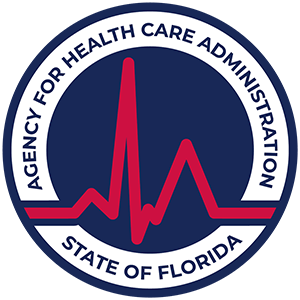Prescription Medication Addiction
Navigate the path to recovery from prescription medication addiction with counseling, detox, and prevention.
Understanding Prescription Medication Abuse
Prescription medication abuse, or the misuse of drugs prescribed by doctors, has increasingly become a significant public health concern. It is crucial to understand how this addiction is diagnosed, detected, and treated to effectively combat the issue.
Diagnosis and Detection
Diagnosing prescription medication abuse generally involves a thorough assessment of the patient's medical history, along with responses to specific questions regarding their drug use habits. In some instances, certain signs and symptoms can provide additional clues to confirming a diagnosis. For instance, drastic changes in behavior, mood swings, or significant weight loss could indicate a potential problem.
Doctors often employ various tests to detect drug use. Blood or urine tests can detect many types of drugs and can be particularly useful in tracking the progress of someone undergoing treatment for prescription drug addiction.

Treatment Options
The treatment options for prescription drug abuse are varied, depending largely on the type of drug used and the individual's specific needs. Typically, treatment involves a combination of counseling, withdrawal (also known as detoxification), medication, and recovery support.
Individual, group, or family counseling by a licensed alcohol and drug counselor or other addiction specialist can be beneficial for individuals struggling with prescription drug abuse. This form of therapy can provide emotional support, help build coping strategies, and address underlying issues that may contribute to substance abuse.
On the medical front, withdrawal from the prescription drugs may be necessary as part of the treatment process. However, it's important to note that withdrawal can be dangerous and should always be conducted under the supervision of a healthcare provider.
The use of addiction medicine, such as buprenorphine, methadone, and naltrexone, is another vital component of treatment. These medications can help manage withdrawal symptoms, reduce cravings, and normalize body functions, making the recovery process more manageable.
In some cases, multiple courses of treatment may be necessary for a full recovery [2]. It's important to remember that recovery is a journey, and it's okay to need ongoing support and treatment to overcome prescription medication addiction.
For more information on specific prescription drugs and their addictive potential, check out our articles on peptides, melatonin, and gabapentin.
Counseling for Recovery
Along the path to recovery from prescription medication addiction, counseling plays a crucial role. It helps individuals understand their addiction, learn coping mechanisms, and develop strategies to prevent relapse.
Importance of Counseling
Counseling is usually a key part of treatment for prescription drug abuse, offering individual, group, or family counseling. A licensed alcohol and drug counselor or other addiction specialist can provide essential guidance and support to individuals struggling with this issue.
It's important to understand that addiction is not just a physical dependence but often involves psychological and emotional aspects as well. Individuals who battle prescription drug abuse are often suffering from a co-occurring mental illness and may be attempting to self-medicate the symptoms of their untreated or undiagnosed mental illness. Counseling can help address these underlying issues and provide tools for managing them.
Types of Counseling
There are several types of counseling available for those overcoming prescription medication addiction. The type of counseling one receives depends on their specific needs, circumstances, and preferences.
- Individual Counseling: This involves one-on-one sessions with a counselor or therapist. Here, individuals can discuss their feelings, experiences, and fears related to their addiction in a safe and confidential environment.
- Group Counseling: In group counseling, individuals come together to share experiences and provide mutual support. It can be beneficial for individuals to hear from others who are going through similar experiences, providing a sense of community and understanding.
- Family Counseling: Addiction affects not only the individual but also their family. Family counseling can help families understand the nature of addiction and how to best support their loved one.
- Medication-Assisted Treatment (MAT): In some cases, medications like methadone, buprenorphine, and naltrexone can be used in combination with behavioral treatments. These can help prevent withdrawal symptoms, relieve cravings, and avoid relapse in patients addicted to prescription opioids.
In conclusion, the journey to recovery from prescription medication addiction is unique to each individual. Depending on the circumstances, one may benefit more from a certain type of counseling over others. The key is to find a treatment plan tailored to the individual's needs, providing them with the best chance of a successful recovery. For more information on prescription drug abuse, visit our articles on prescription drug abuse, can you get addicted to peptides?, is melatonin addictive?, and is gabapentin addictive?.
Withdrawal and Detoxification
An essential part of the recovery journey from prescription medication addiction involves the process of withdrawal and detoxification. This phase can be challenging but is necessary to clear the body of the addictive substances and pave the way towards a drug-free life.
Necessity of Withdrawal
Withdrawal from prescription drugs, depending on the type and usage, may be necessary as part of treatment. This is because the body may have developed a physical tolerance to the medication and has come to rely on it to perform daily functions. Withdrawal symptoms occur when the body needs to adjust to functioning without the drug, and these symptoms will vary in severity among types of drug abused, frequency of use, level of dependence, and additional substances abused [3]. The process can be difficult and potentially dangerous, and should therefore be conducted under the guidance of a healthcare provider [1].
Safe Detox Process
The detoxification process must be carefully managed to ensure the patient's safety and minimize discomfort. Medications like methadone, buprenorphine, and naltrexone can help prevent withdrawal symptoms, relieve cravings, and avoid relapse in patients addicted to prescription opioids. These medications are often used in combination with behavioral treatments in a practice known as medication-assisted treatment (MAT).
Methadone, a synthetic opioid agonist, has been effectively used for over 40 years to treat heroin addiction. It prevents withdrawal symptoms and relieves drug cravings by acting on the same mu-opioid receptors as other opioids but with less intensity and for a longer duration.
Buprenorphine, a partial opioid agonist, can reduce cravings and is well tolerated by patients. It can be prescribed by certified healthcare providers in an office setting and has formulations that eliminate the need for daily dosing, improving treatment adherence.
Through these strategies, the detoxification process can be safely and successfully managed, setting the stage for the next steps in the recovery journey. If you or a loved one are struggling with prescription medication addiction, it's important to seek help from a medical professional who can guide you through the withdrawal and detoxification process. For more information on prescription drug abuse, visit our articles on can you get addicted to peptides?, is melatonin addictive?, and is gabapentin addictive?.
Intervention Strategies
Intervention strategies are crucial in helping individuals battling prescription medication addiction. These strategies can involve personal interactions with loved ones or the help of trained professionals.
Approaching a Loved One
Approaching a loved one about prescription drug abuse can be challenging. Denial and anger are common reactions, making it difficult to communicate effectively [1]. However, it's important to approach the individual with empathy, understanding, and openness.
Here are some tips for approaching a loved one about prescription medication addiction:
- Gather Information: Understand the signs and symptoms of prescription drug abuse. Having factual information can help when discussing the issue.
- Plan Your Conversation: Choose a time when the person is likely to be sober and receptive. Avoid confrontations and accusations, focusing instead on expressing concern and providing support.
- Offer Help: Discuss treatment options and offer to accompany them to appointments or support groups.
- Stay Involved: Recovery can be a long process. Continued emotional support can make a significant difference in a loved one's journey to sobriety.
It's important to remember that professional help is often necessary in dealing with prescription medication addiction. Additionally, every person's experience with addiction is unique, and what works for one person may not work for another.
Professional Interventions
In some cases, a professional intervention may be necessary to motivate an individual to seek help for addictive behaviors. A professional interventionist can guide the process, ensuring it is safe, supportive, and effective.
Professional interventions typically involve a structured meeting where family and friends express their concern about the individual's drug use and its consequences. The goal is to encourage the individual to accept treatment. An interventionist can provide guidance on how to best communicate these concerns and can also facilitate the meeting to ensure it stays productive.
It's worth noting that interventions should be carefully planned and should ideally be led by someone who understands the complexities and potential challenges of the process. It's also important to have a treatment plan ready to implement if the person agrees to seek help.
Dealing with prescription medication addiction is difficult, but with the right support and resources, recovery is possible. For more information on prescription medication addiction and treatment options, visit our resources on can you get addicted to peptides?, is melatonin addictive?, and is gabapentin addictive?.
Impact on Different Age Groups
Prescription medication addiction is a problem that transcends age barriers. However, its impact varies among different age groups, with teens and young adults being particularly vulnerable.
Teen Prescription Drug Abuse
Prescription drug abuse can affect all age groups, including teens. The most often misused prescription drugs among this demographic include opioid painkillers, anti-anxiety medicines, sedatives, and stimulants [4]. For more information on various types of misused prescription drugs, refer to our articles on is gabapentin addictive?, can you get addicted to peptides?, and is melatonin addictive?.
The abuse of prescription drugs is particularly high among young adults aged 18 to 25, with 1 in 5 young adults reporting non-medical use of prescription drugs in the past year [5].
Risk Factors and Consequences
Prescription drug abuse is highest among teens and young adults, but it is also a significant issue among older adults who combine drugs with alcohol, have multiple health problems, and take multiple drugs.
Prescription drug abuse is a significant public health problem in the United States, with an estimated 52 million people having used prescription drugs non-medically in their lifetime.
Furthermore, the abuse of prescription medications has been increasing over the years. Emergency department visits related to prescription drug abuse more than doubled from 2004 to 2009.
The consequences of prescription drug abuse can be severe, including addiction, physical harm, and even death. Therefore, it's crucial to understand the risks and take proactive steps to prevent misuse. For further reading, explore our article on prescription drug abuse.
Preventative Measures
As with any form of addiction, prevention is always better than cure. When it comes to prescription medication abuse, early identification and intervention can be crucial in preventing the problem from escalating into a full-blown addiction [4].
Identifying Early Signs
Recognizing the initial signs of prescription drug abuse can be a significant first step towards prevention. Changes in behavior, physical health, and social interactions can all be indicators of a potential issue. These signs may vary depending on the type of medication being misused, but general signs can include frequent requests for refills, losing prescriptions and requesting replacements, and taking higher doses than prescribed.
Not all drugs carry the same risk of addiction. For instance, questions like can you get addicted to peptides? or is melatonin addictive? or even is gabapentin addictive? often arise, underlining the importance of understanding the specific risks associated with each medication.
Risk Reduction Strategies
There are several strategies that can be employed to reduce the risk of prescription medication addiction. One of the most effective strategies is following the healthcare provider's instructions on how to take the medicine. This includes taking the prescribed dose at the correct times, not sharing medication with others, and not taking the medication in a way other than prescribed [4].
Another important preventative measure is the proper disposal of unused or expired medications. This can be done following FDA guidelines or by visiting DEA collection sites, ensuring these medications do not end up in the wrong hands.
Finally, open communication with healthcare professionals can help mitigate the risk of misuse. Patients should inform healthcare providers about all medications they are currently taking before obtaining any new prescriptions. This can help the provider make informed decisions and provide guidance on potential drug interactions or risk factors.
Prescription drug abuse is a significant public health problem, with millions having used prescription drugs non-medically in their lifetime [5]. As such, it is crucial to take preventative measures seriously to curb the rising tide of prescription medication addiction.
References
[2]: https://nida.nih.gov/publications/research-reports/misuse-prescription-drugs/how-can-prescription-drug-addiction-be-treated
[3]: https://www.mayoclinic.org/diseases-conditions/prescription-drug-abuse/symptoms-causes/syc-20376813
[4]: https://nida.nih.gov/sites/default/files/rxdrugsplacemat508c10052011.pdf
[5]: https://nida.nih.gov/publications/research-reports/misuse-prescription-drugs/how-can-prescription-drug-misuse-be-prevented














.svg)









